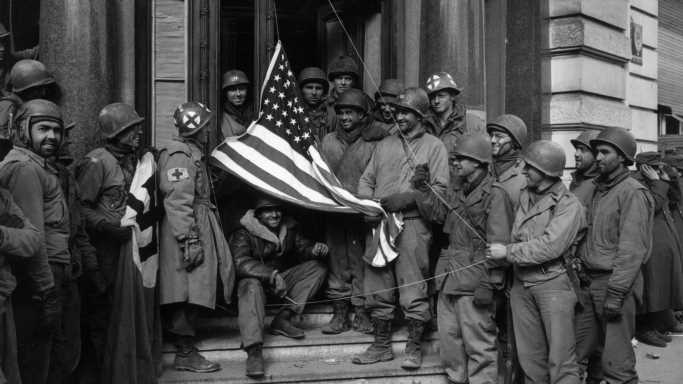World War II stands as one of the most significant conflicts in human history, one that shaped the world as we know it today, and the United States played a key role in it. The success of the U.S. infantry in this global struggle can be attributed, in part, to the deployment of small arms.
A variety of small arms played different roles in the arsenal of U.S. infantry, with the caliber of each gun often determining its role. Caliber of a gun refers to the size of the bore of the firearm, with larger caliber guns capable of firing larger projectiles, therefore doing more damage to enemy assets, as in anti-material rifles today. During WWII, too, the U.S. used guns of ranging calibers, each to different effect.
To identify the highest-caliber American infantry guns of WWII, 24/7 Wall St. reviewed WW2 infantry firearms, a list compiled by Military Factory, an online database of military vehicles, aircraft, arms, and more. We ordered WWII firearms from lowest caliber to highest caliber and excluded shotguns from this list. Supplemental information about the year the gun entered service, type of gun, and firing action also came from Military Factory.
One iconic small arm used during WWII was the M1911 pistol, a design that had already been in service for several decades by the time the war began. Chambered in .45 ACP, it was renowned for its stopping power and reliability. The M1911 served as the sidearm for officers and non-commissioned officers, offering a potent backup in close-quarters combat. (Also see, the classic long range sniper rifles of World War II.)
Another gun used in close quarters combat was the Thompson submachine gun, commonly known as the “Tommy Gun.” The Thompson was a select-fire weapon that could fire in both semi-automatic and fully automatic modes, giving soldiers the ability to lay down a hail of bullets when needed. The submachine gun was chambered for .45 ACP as well. While it was originally developed during the Prohibition era for law enforcement, it found its place on the battlefield and in the hands of soldiers during WWII. (This is the evolution of automatic rifles in the U.S. Army.)
Noticeably, many guns on the list share ammunition, which optimizes distributing ammunition in the field. Also, while some of these weapons may have different names for their ammunition, the bore or width of the round is the same as other brands as many rifles are uniformly chambered. For example, .30-06 Springfield ammunition has a similar caliber as that of a .303 British round or a 7.92x57mm Mauser, but these rounds may differ in other aspects such as the length of the round or even the propellant within it.
The success of the U.S. infantry in World War II was significantly influenced by the deployment of small arms. At higher calibers these guns offered American soldiers increased firepower that allowed them to prevail throughout the course of the war.
Here is a look at the highest-caliber guns of World War II.
Sponsored: Tips for Investing
A financial advisor can help you understand the advantages and disadvantages of investment properties. Finding a qualified financial advisor doesn’t have to be hard. SmartAsset’s free tool matches you with up to three financial advisors who serve your area, and you can interview your advisor matches at no cost to decide which one is right for you. If you’re ready to find an advisor who can help you achieve your financial goals, get started now.
Investing in real estate can diversify your portfolio. But expanding your horizons may add additional costs. If you’re an investor looking to minimize expenses, consider checking out online brokerages. They often offer low investment fees, helping you maximize your profit.
Source: Read Full Article
-
Global aviation leasing body downgrades India in light of Go First case
-
Hamas To Release 50 Hostages In Gaza; Israel Agrees To 4-day Truce
-
FDA Authorizes Updated Covid Vaccines For Children As Young As 6 Months Old
-
This State Sent the Most Troops to Fight in the Civil War
-
Dow Bounces Into Positive Territory But Nasdaq, S&P 500 Remain In The Red

